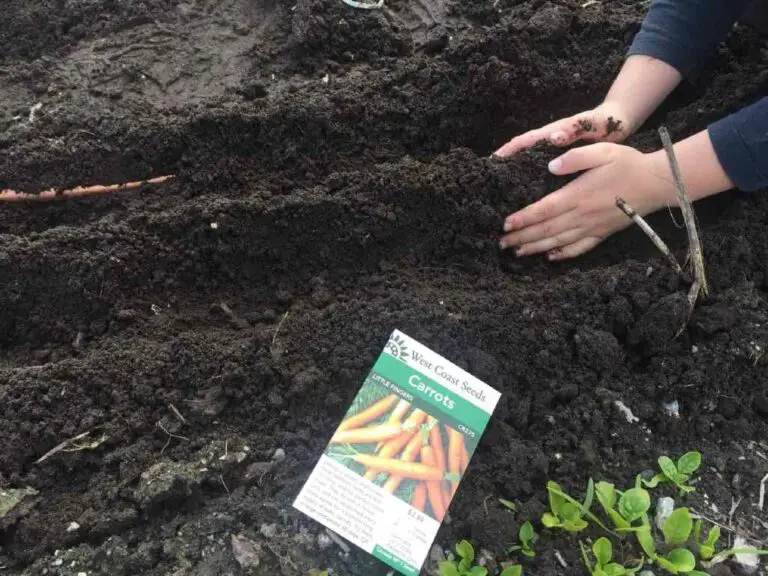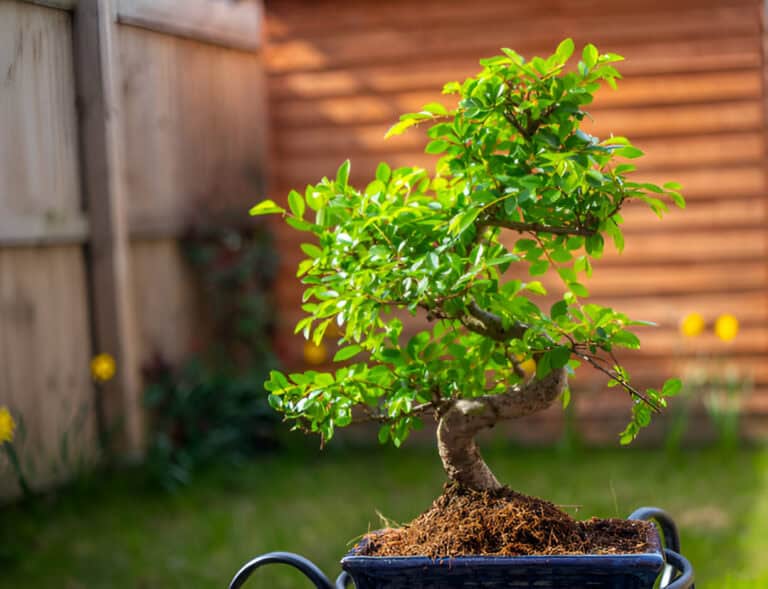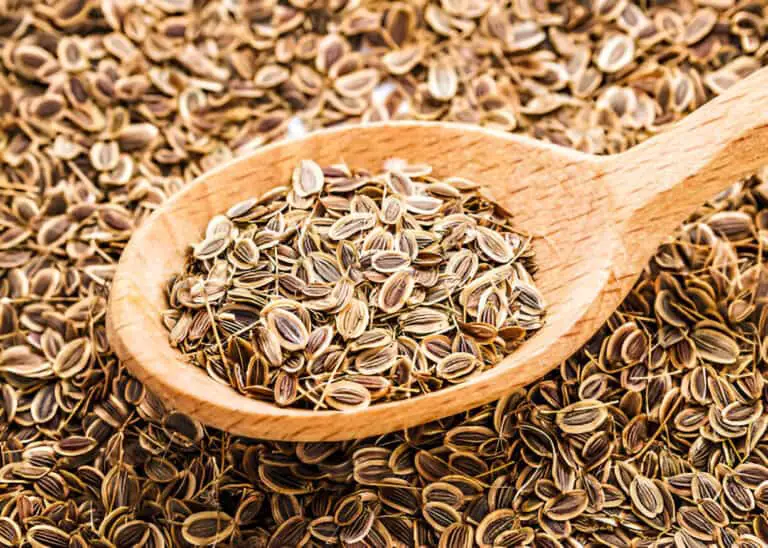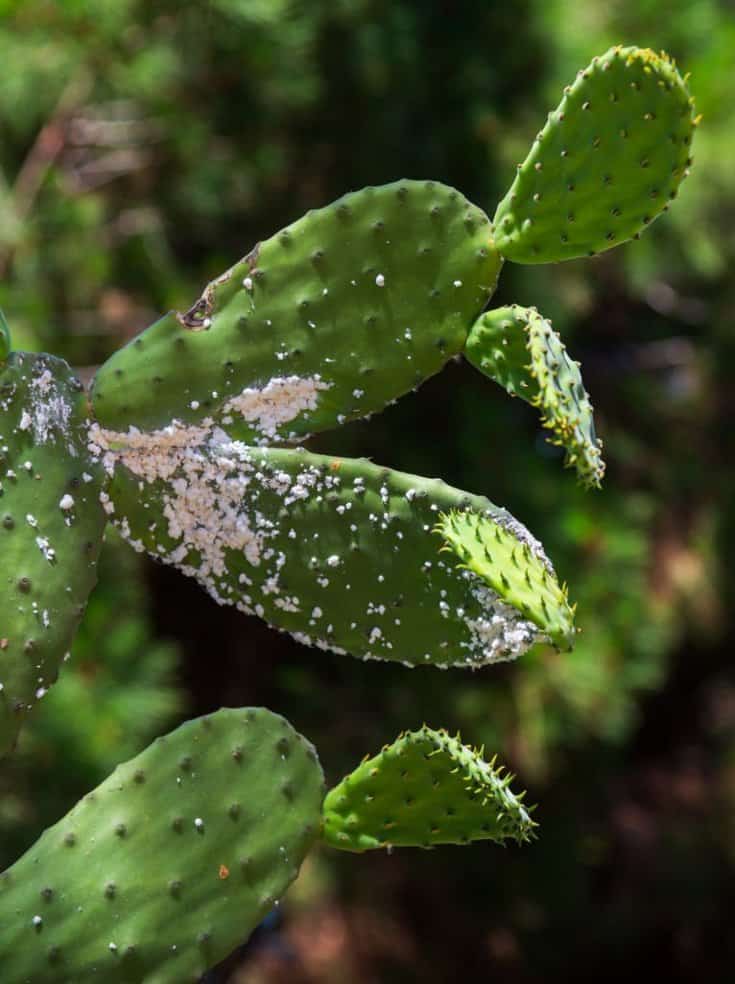Why Is My Christmas Cactus Turning Purple? Top Causes and Solution
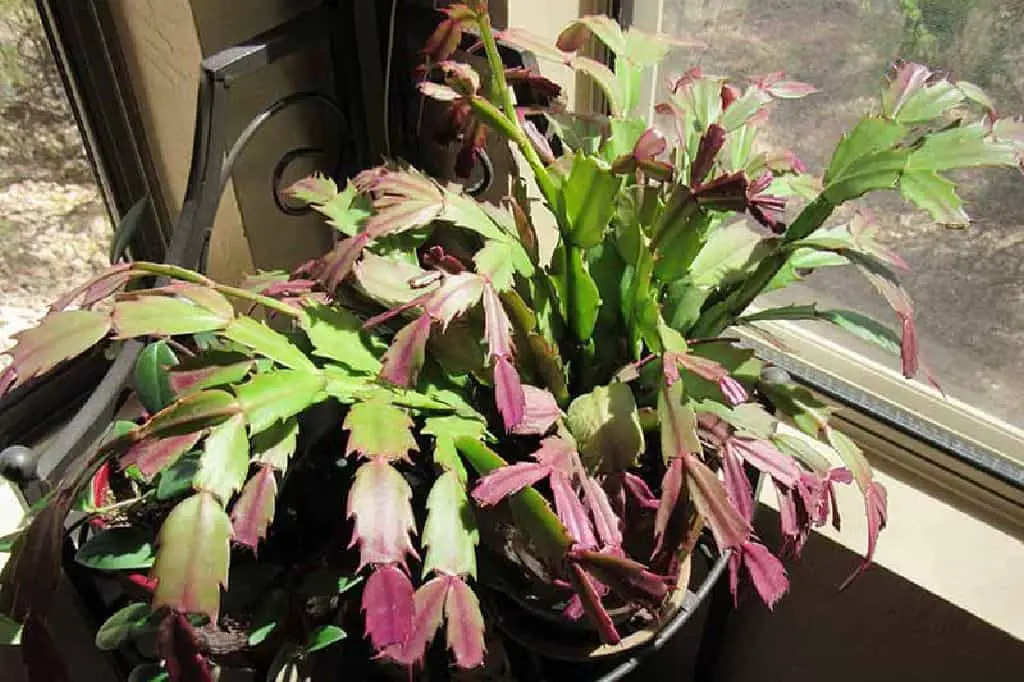
Christmas cactus (Schlumbergera) are fairly low maintenance plants and can thrive off of little attention. But this doesn’t mean that you should be negligent with your houseplant. If you have noticed your Christmas cactus turning purple and wilting, then there are a number of common causes that may be the problem.
This blog aims to guide you through the most common reasons you might be asking yourself, ‘Why is my Christmas cactus turning purple?’ and will give you extra tips on Christmas cactus care.
If you think your plant might sadly be on its way out, then we have written an awesome article on how to revive a Christmas cactus! You can also read up on the best soil for Christmas cactus.
Christmas Cactus Leaves Turning Purple
When your Thanksgiving, Easter, or Christmas cactus comes into bloom, you should see an array of vibrant pinks and reds! But if you notice the Christmas cactus leaves turning purple on the edges, then more often than not your plant is trying to tell you that something is wrong.
If you’re sitting asking yourself ‘why do Christmas cactus leaves turn purple?’ and are coming to a dead-end, then don’t panic as we have all the most common reasons detailed below.
9/10 times,, it will be one of three reasons, and these are:
- Nutrition
- Crowded roots
- Location
We are now going to go into detail on how to resolve the issue, but if unfortunately, your plant hasn’t managed to bloom this holiday season, we have a blog guiding you on how to force a Christmas cactus to bloom and will answer the impending question of ‘why is my Christmas cactus not blooming?’.
Why Do Christmas Cactus Leaves Turn Purple?
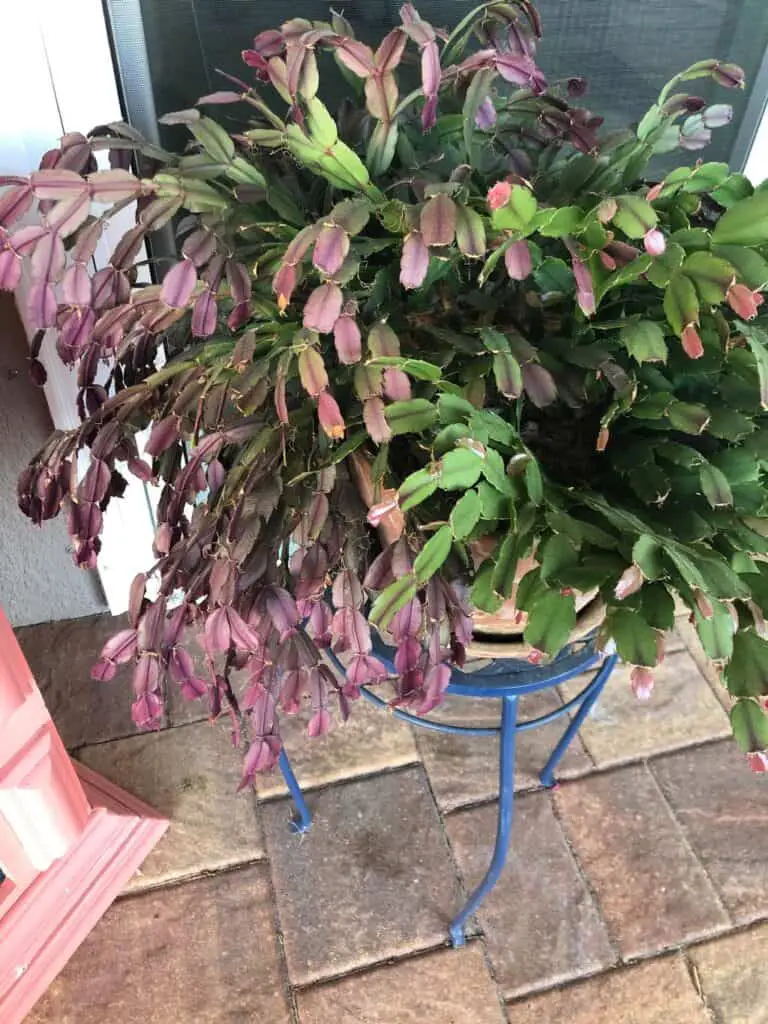
Let’s get onto the first reason why your Christmas cactus is turning purple and has wilting leaves.
1. Nutrition
The first and foremost reason you’ll notice Christmas cactus leaves turning purple is for nutritional reasons. Cacti need fertilizing, no matter the type. Christmas cactus doesn’t need fertilizing while in bloom, but through the months April – October you should be fertilizing every two to four weeks with a general-purpose indoor fertilizer.
I always buy Schultz Cactus Plus 2-7-7 liquid Plant Food because it’s affordable, easy to use, and works well.
It’s also worth mentioning that Christmas cacti need more magnesium than most other indoor plants, so you should also be mixing 1 teaspoon of Epsom salts with 1 gallon of water for additional feeding. This should be done once a month on top of your regular fertilizing, but make sure it’s on a different week!
You should stop fertilizing at the beginning of October to encourage your Christmas cactus to bloom.
Many gardeners like to use their own homemade fertilizer instead of using a shop-bought product. A great alternative is putting coffee grounds on Christmas cactus. This is because coffee contains a considerable amount of magnesium and potassium.
However, if you are unsure of what type of soil you are currently using, then it is best to use a general-purpose cactus fertilizer to stop your Christmas cactus leaves turning purple. This is because coffee is only beneficial on Christmas cactus if you ARE NOT using acidic soil.
Coffee grounds increase the acidity of your soil, but if it is already between 5.8 – 7 pH, then you’re better off just popping to your local garden center or ordering a fertilizer online to increase the nutrition of your Christmas cactus.
If you are really set on making your own fertilizer to stop your Christmas cactus from turning purple, then you should remember the basic formula of 20-20-20 or 20-10-20. Half-strength water-soluble formulas work well and will do the trick. We would always advise using a fertilizer that is high in Phosphorus.
Never fertilize when the cactus flowers, as this will cause the buds to fall off. Following these nutritional guidelines will ensure that when the plant blooms for the holiday season, you won’t be asking yourself ‘why is my Christmas cactus turning purple?’. Instead, you will be left with a gorgeous plant with vibrant pinks and reds that look wonderful indoors and outdoors.
2. Crowded Roots
If you are certain that you have been fertilizing your Christmas cactus correctly and it has no nutritional problems, then your Christmas cactus turning purple and wilting could be because of crowded roots. If your houseplant is rootbound then it may not be absorbing all the nutrients you’re giving it.
It is important to remember that Christmas cactus actually enjoy having cozy roots so the turning of purple leaves will only be due to crowdedness if it has been in the same pot for three-four years. If you have repotted within the last three years then your Christmas cactus leaves turning purple is more than likely going to be because of nutrition or location.
If you do decide that you need to repot your Christmas cactus, then it is best done in spring. Your pot should be only one size larger, and for extra nutrition, you should replenish the soil during the repotting process. You should also never repot your Christmas cactus when the plant is in bloom, as this will surely damage it.
When replenishing the soil, you’ll want to be using well-draining soil. My go-to soil for my Christmas cactus is this Organic Succulent and Cactus Soil Mix or Hoffman 10410 Organic Cactus and Succulent Soil Mix. Both use perlite, which makes it fast-draining, and both have a good pH level for a Christmas cactus.
If you are wondering when to repot your Christmas cactus and feel as if this may be the reason for the leaves turning purple and drooping, then there are some telltale signs you can look out for. For example, you should always check the bottom of your pot. If the roots are shooting out of the drainage holes, then it’s a good indicator that it is indeed time to repot.
During the repotting process, you can always take cuttings from the plant for propagation. This is where you grow new plants from a variety of sources, such as seeds and cuttings. This is also a great opportunity to identify any other problems that might be going on with your cacti, such as Christmas cactus bugs!
3. Location
Alright, so you have recently repotted your plant and are confident you have been giving it all the nutrients it needs. That leads us to our final common reason you are asking yourself, ‘Why is my Christmas cactus turning purple?’. And that is location.
During the fall and winter, your plant requires bright light for it to thrive. However, too much direct sunlight in the summer months will be the cause of your Christmas cactus leaves turning purple. Copious amounts of direct sunlight in the summer will actually cause sunburn to most succulents and cacti and can actually cause leaves falling off your Christmas cactus.
For indoor Christmas cacti, it should be placed in a north-facing window. For bloom to happen, you’ll need to be putting your plant in a dark room for at least 12 hours a day from September. We recommend placing it in a room that isn’t used in the evenings, as artificial light also has its negative effects.
Once the buds begin to appear, this is when you move it to your display area, out of direct sunlight. Too much direct sunlight can cause a number of problems, such as your Christmas cactus turning purple and wilting, sunburn on the edges of the leaves, and an all-round sad, drooping, and unhealthy looking plant. Not what we want during the happy festive seasons!
When your Christmas cactus is in bloom, it also prefers temperatures of around 60–70 degrees F. with average to high humidity levels. If you live in a relatively dry environment, then placing a tray of pebbles filled with water beneath the container is a good way to add more humidity to your home. (View source here).
All in all, location is important. Putting your plant in direct sunlight is an easy mistake to make. After all, it is a cactus, and desert cactus LOVE direct sun. However, the Christmas cactus is a jungle plant and can withstand more humidity and prefers indirect light.
4. Soil Problems

Soil problems can often be the culprit when your Christmas cactus starts turning purple. The quality of your potting mix plays a significant role in the plant’s health and coloration.
If the soil lacks proper nutrients or becomes compacted, the roots can’t absorb the necessary elements, leading to stress and purplish leaves. A well-balanced, nutrient-rich mix designed for cacti and succulents can help maintain vibrant foliage.
Drainage is equally crucial for avoiding root issues. Christmas cacti need soil that drains well to prevent water from sitting at the roots, which can cause rot and further stress to the plant. If water accumulates, the roots can become waterlogged, leading to poor nutrient absorption.
This can result in purpling leaves, which is the plant’s way of signaling distress. A quick fix may be repotting into a mix with better drainage, such as one made with perlite or sand.
Why Is My Christmas Cactus Turning Purple? A Conclusion
In today’s blog post, we have discussed all the common reasons you are asking yourself, ‘Why is my Christmas cactus turning purple?’. Looking forward to seeing your wonderful plant bloom into gorgeous pinks and reds is great, so we understand why you might feel deflated if you notice your Christmas cactus leaves turning purple around the edges. We hope that you have learned something today and now have an idea of what is causing this to happen. To quickly recap, the main three reasons why your Christmas cactus is turning purple and wilting are:
- Nutrition
- Crowded Roots
- Location
Hopefully, you have found guidance in one of these three sections and can now work on getting your Christmas cactus back into a healthy condition, ready for the festive season. If you think you know of another reason that causes this common cactus problem, then leave us a comment! We’re always looking to learn new things.
Succulent Care Guide is a blog that aims to deliver reliable information on all things cactus and succulent. We have interesting reads on all sorts of topics, including general care, pests, root rot and overwatering! If there is something you’re after, then let us know and we’ll be happy to offer our guidance.


